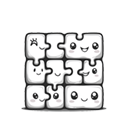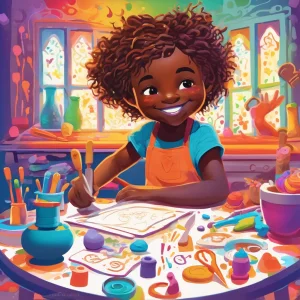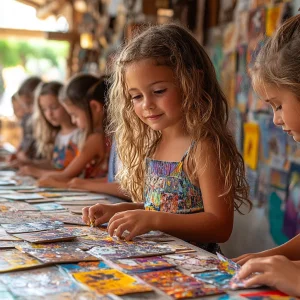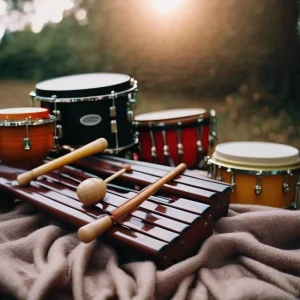Activity
Similar Activities
Harmony of Colors: Collaborative Finger Painting Masterpiece
Children’s Age: 2–3 years
Activity Duration: 15 minutes
Engage children aged 24 to 36 months in the "Collaborative Finger Painting Masterpiece" activity to foster empathy, cooperation, and creativity. Set up with paper, colorful non-tox…
Activity Duration: 15 minutes
Animal Feast Adventure: A Whimsical Feeding Frenzy
Children’s Age: 5–8 years
Activity Duration: 10 – 25 minutes
An interactive activity where children feed toy animals with pretend food, promoting communication skills and adaptive development.
Activity Duration: 10 – 25 minutes
Bridge Builders: Eco Teamwork and Critical Thinking
Children’s Age: 8–9 years
Activity Duration: 10 – 25 minutes
An eco-conscious activity where children build bridges using popsicle sticks and tape to support toy cars, promoting teamwork and environmental awareness.
Activity Duration: 10 – 25 minutes
Magical Playdough Making and Sensory Adventure
Children’s Age: 0 month – 6 years
Activity Duration: 10 minutes
Let's make homemade playdough together! It's a fun sensory activity that helps children explore different textures and colors while developing their muscles and creativity. Gather …
Activity Duration: 10 minutes
Sensory Valentine's Day Exploration: Heartfelt Play
Children’s Age: 6 months – 1.5 years
Activity Duration: 10 minutes
Explore the Sensory Valentine's Day Exploration activity for young children, offering a sensory-rich experience themed around Valentine's Day. Engage children's senses, social-emot…
Activity Duration: 10 minutes
Holiday Sensory Bag Exploration – Festive Adventure
Children’s Age: 1–1.5 years
Activity Duration: 5 – 10 minutes
Introduce your 12 to 18-month-old to a Holiday Sensory Bag Exploration for sensory play and development. Prepare a bag with gel/oil, holiday items, and tape for a secure setup. Gui…
Activity Duration: 5 – 10 minutes
Enchanted Sensory Bottle Exploration for Little Ones
Children’s Age: 6 months – 1.5 years
Activity Duration: 10 minutes
Engage your little one with the Sensory Bottle Exploration activity, perfect for children aged 6 to 18 months. This sensory experience supports play skills, adaptive development, a…
Activity Duration: 10 minutes
Nature's Touch: Sensory Nature Exploration for Babies
Children’s Age: 3 – 9 months
Activity Duration: 5 – 10 minutes
Engage your 3 to 9-month-old baby in a sensory nature exploration activity to support their development. Lay them on a soft blanket with safe natural objects and optional toys. Des…
Activity Duration: 5 – 10 minutes
Whispers of the Sports Storytelling Relay
Children’s Age: 8–12 years
Activity Duration: 35 – 45 minutes
Engage children aged 8 to 12 in the "Sports Storytelling Relay" activity, a fun game promoting language development, cognitive skills, and empathy. Set up a safe relay course with …
Activity Duration: 35 – 45 minutes
Cultural Collage Celebration: Embracing Diversity Through Art
Children’s Age: 6–10 years
Activity Duration: 15 minutes
Explore and celebrate cultural diversity with the "Cultural Collage Celebration" activity designed for children. Enhance academic skills by creating a collaborative cultural collag…
Activity Duration: 15 minutes
Enchanted Nature-Based Storytelling Adventure
Children’s Age: 0 month – 6 years
Activity Duration: 5 – 10 minutes
Let's have fun with Nature-Based Storytelling! Find a cozy outdoor spot, lay down a blanket, and bring a basket for collecting leaves and stones. Sit with your child, explore natur…
Activity Duration: 5 – 10 minutes
Whispers of Imagination: A Tale Unfolds
Children’s Age: 2–2.5 years
Activity Duration: 15 minutes
Join "Story Collage Time" for children aged 24 to 30 months, a creative activity fostering language development, play skills, and imagination. Gather child-friendly scissors, glue …
Activity Duration: 15 minutes



























